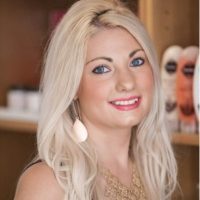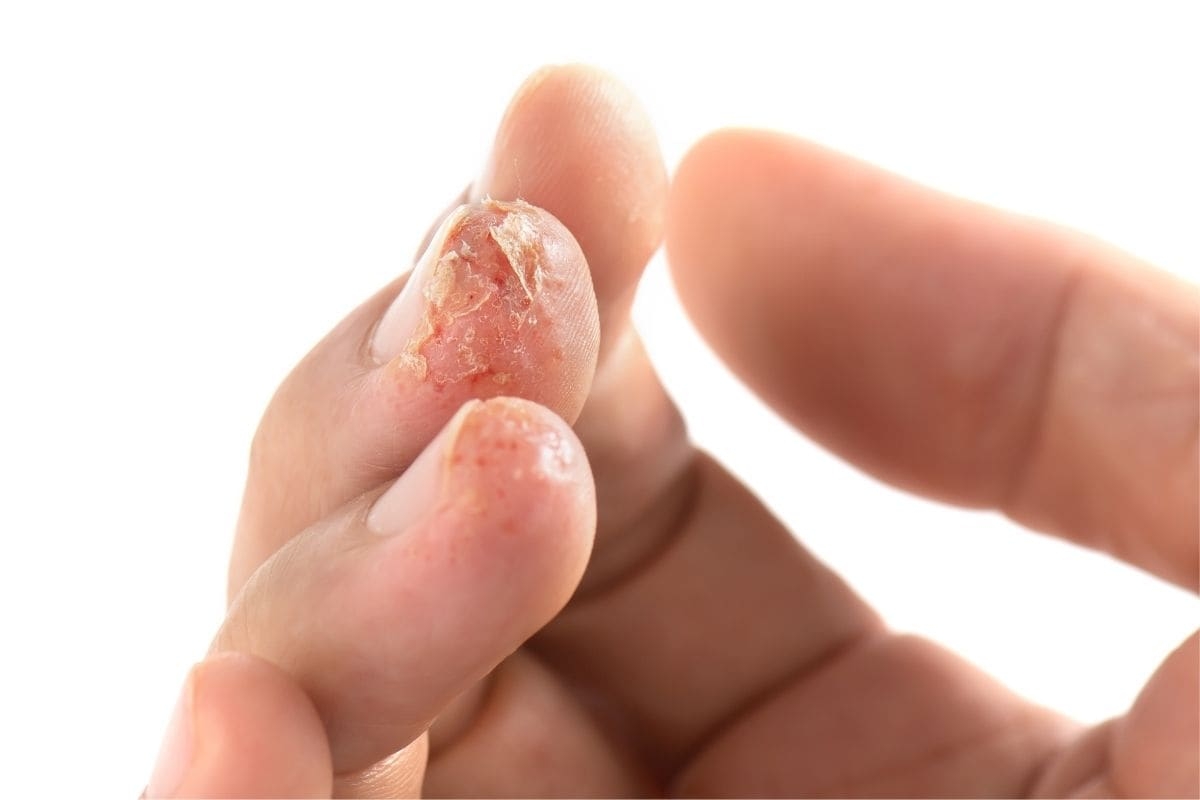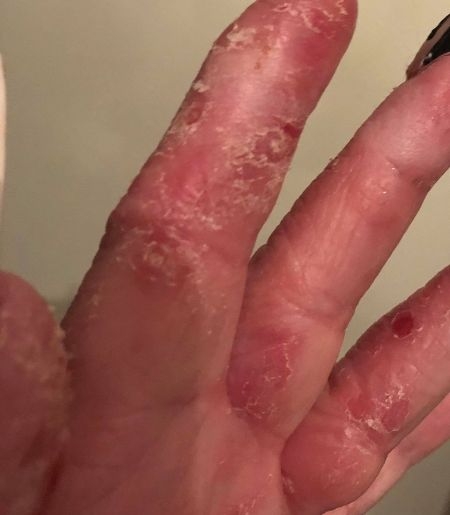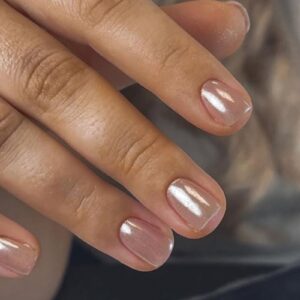
Home gel kit dangers & 6 ways to prevent allergies at the nail desk
By Katie Barnes | 11 January 2025 | Expert Advice, Feature, Health & wellbeing

Many people turned to DIY nail kits during the coronavirus lockdown. They may have been visiting a nail pro for months, years or even decades – before suddenly, the luxury of a nail appointment was gone, and some saw a solution in home application of gel polish.
DIY home kits have always been readily available: 42% of consumers were seeking these prior to the pandemic. There’s been uproar around the media recommending these more recently.
The most important consideration at a time like this is education.
While, as nail pros, we don’t advocate home use, we can support clients by educating on safe use: reactions, allergies, dangers of touching the skin, undercured product, quality of products and removal. Teach how to recognise and prevent these via chats at the nail desk or your social media platforms.
We can educate on the dangers of these to our clients and those seeking to purchase. Some will listen and some won’t. Some may have already been using home kits for years. If you see someone using one, educate them. You’re not teaching them how to do your job and replace you; you’re simply guiding them how to do what they were already doing, but safely. Read my previous blog on what to advise your customers and why you should not use an at-home gel polish kit.
An allergy builds up over time from overexposure of repetitive skin contact with an allergen (in this case, usually an ingredient in nail products), starting off as irritation and redness.
We become allergic to one particular ingredient, with some reporting an allergy to HEMA, which is a popular ingredient in nail products used for adhesion – but it is not the only allergen. Always check the percentage of allergens in the nail products you use (HEMA’s upper limit is 35%). You can change to a product no longer containing this allergen if desired, but if you don’t change the working technique, an allergy will just occur to another ingredient and it will become a vicious cycle. Once an allergy develops, the immune system goes into heightened alert, so it becomes much easier and faster to develop allergies to other ingredients.

An allergy will never go away, as the immune system will never forget that specific allergen.
Understanding the difference between irritation and allergy is a critical first step. This can help prevent an irritation turning into an allergy by listening to the first warning signs.
Clean, tidy and safe working is essential and while an allergy may not currently be present, if you are working incorrectly, then it is a case of when and not if an allergy occurs. This can be detrimental to the career lifespan of a tech. Some points to address for all nail products are:
1. Product-soaked tissue
Focusing on where the tissue on which you wipe your brush and excess monomer, gels and paints on is positioned is one of the main concerns. Too many techs have this directly in front of them and rest their hand and arm in this, constantly overexposing themselves. The tissue should be positioned at the side of you, away from skin contact from tech and client.
It is also essential to constantly change this when working, if it is getting over-saturated with excess product and thrown away before filing. Couch roll isn’t very absorbent and kitchen roll is too harsh for your brush.
2. Dust-free desk
Dust gets everywhere. Many allergies are developed from uncured product dust filings. Keep the nail desk clean and free from dust and change the towel, if you use one, after every client. It is important to make sure your desk is kept dust-free and to ensure you don’t rest your arm in the dust and develop an irritation or allergy.
As well as changing towels, wearing gloves, washing hands and having a dust extraction system, there are some extra items that can be used during a service to remove dust. These include a microfibre cloth over the tech and client’s skin, as this is designed to pick up dust, and canned air, as this gets in all the crevices on your desk and kit that a brush or cloth may not.

3. Touching uncured product
A huge culprit of overexposure is techs unknowingly and repeatedly touching their brushes to remove product or put into shape, using their fingers or nails to check if product is cured or fully polymerised, and ‘tidying up’ over-run product on clients’ cuticles or sidewalls. It is essential to never touch uncured product with your fingers or any other part of the skin.
4. Touching the skin
An allergy builds up over time from overexposure of repetitive skin. One of the hardest elements when creating nails is mastering the cuticle area: a known cause for skin contact. Master your cuticle application with both acrylic and gel here.
5. Matching lamp & products
Does a matched lamp really matter? Maybe you use mismatched products and have never experienced an issue. Follow my experiment and research on this well-discussed topic.
 6. Nitrile gloves
6. Nitrile gloves
For our industry, we require a glove thickness of 8 mil (thousandths of an inch) = 0.19mm per 60 mins. If you purchase a lesser thickness, you can double up or replace sooner than every 60 mins. These should conform to the EU Chemical Resistance specification EN 374-3 or higher.
Gloves with an EN 374-3 rating mean the chemical resistance was met for 60 minutes or more. It is important to replace these gloves after each client.
Nitrile gloves are recommended because latex gloves contain a protein that can cause allergic reactions, and latex gloves don’t provide nearly as good protection as nitrile gloves. As an extra layer of protection, consider wearing a skin barrier cream such as Gloves In A Bottle under the gloves and on your arms, but it is important to be aware that barrier cream is not an alternative to wearing nitrile gloves.
If you or your customer suspect an allergy follow the recommendations in my previous Scratch blog.
Keep yourselves and your clients safe.
Love Katie B x
*Originally published January 2021.

Read the latest issue









